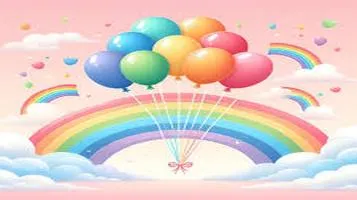A Joyous Burst of Color and Cheer: A Review of Balloons
Balloons are lightweight, flexible bags that can be inflated with gases such as air, helium, or hydrogen. Typically made from materials like latex, rubber, or nylon fabric, balloons are a staple in celebrations and decorations due to their vibrant colors and buoyant nature. Originating from simple rubber designs, modern balloons have evolved to include various shapes and sizes, from the classic round to intricate designs like animals or letters. Helium-filled balloons are particularly popular for their ability to float, creating dynamic displays. Beyond festivities, balloons are also used in scientific research, particularly in weather forecasting, where they carry instruments into the atmosphere. Additionally, they have found roles in advertising and art installations, showcasing their versatility and universal appeal.

Balloons have long been the unsung heroes of celebrations, effortlessly bringing joy and color to a myriad of events, from birthday parties to weddings, from corporate events to simple family gatherings. Their ability to transform mundane spaces into festive environments is unparalleled, and their versatility is nothing short of remarkable. In this review, I will delve into the various aspects that make balloons an enduring favorite, examining their history, types, uses, and the sheer delight they bring to people of all ages.
A Brief History
The history of balloons is as colorful as the objects themselves. The first balloons were made from animal bladders and intestines, used by ancient civilizations for various ceremonial purposes. Fast forward to the 19th century, and we see the advent of rubber balloons, thanks to Michael Faraday, the famous British scientist who invented them in 1824. This innovation paved the way for modern balloons made from materials like latex and Mylar, each offering unique properties that have expanded their use beyond mere decoration.
Types of Balloons
Balloons come in an astonishing array of shapes, sizes, and materials. The two most common types are latex and Mylar (or foil) balloons. Latex balloons are made from natural rubber and are biodegradable, making them a more environmentally friendly option. They are incredibly versatile, available in almost every color imaginable, and can be filled with either air or helium. However, they have a relatively short lifespan, typically lasting only a day or two before they begin to deflate.
Mylar balloons, on the other hand, are made from a type of polyester film. These balloons are more durable and can hold helium for several weeks, making them ideal for long-lasting displays. They often come in various shapes and sizes, including popular characters, numbers, and letters, adding a personalized touch to any event. Mylar balloons are not biodegradable, but their extended life and reusability can offset some of their environmental impact.
Uses and Applications
The uses of balloons are as varied as the types available. In the realm of celebrations, they are indispensable. Balloons can be used to create stunning arches, centerpieces, and even entire balloon walls. They add an element of surprise and whimsy, whether they are cascading down as a balloon drop or floating serenely above as part of a ceiling decoration.
Beyond personal celebrations, balloons have found a place in corporate events and marketing. Companies often use branded balloons to promote their products or services, leveraging their eye-catching nature to draw attention. Balloons are also used in scientific research, particularly weather balloons that gather data from the upper atmosphere.
The Joy Factor
One of the most compelling reasons for the enduring popularity of balloons is the simple joy they bring. There is something inherently uplifting about a balloon. Children are particularly enamored, their eyes lighting up at the sight of a balloon floating above them or bouncing around a room. Adults, too, cannot help but smile at the sight of balloons, often triggering nostalgic memories of childhood parties and carefree days.
The tactile experience of a balloon is also noteworthy. The sensation of a balloon being filled with air, the feel of its surface, and the sound it makes when rubbed or squeezed—all contribute to a multi-sensory experience that is both delightful and engaging.
Environmental Considerations
While balloons bring joy, it's essential to acknowledge their environmental impact. Latex balloons, although biodegradable, can still take several years to break down and can pose a risk to wildlife if not disposed of properly. Mylar balloons, being non-biodegradable, have an even more significant environmental footprint. Therefore, responsible use and disposal are crucial. Initiatives like balloon recycling programs and the promotion of air-filled balloon decorations over helium-filled ones are steps in the right direction.
Conclusion
In conclusion, balloons are more than just party decorations; they are symbols of joy, celebration, and human ingenuity. Their versatility, ability to transform spaces, and the happiness they bring to people of all ages make them a timeless favorite. While it's essential to consider their environmental impact, responsible use can help mitigate some of these concerns. Whether it's a single balloon given to a child or an elaborate balloon sculpture at a grand event, balloons continue to enchant and uplift, proving that sometimes, the simplest things in life bring the most joy.






